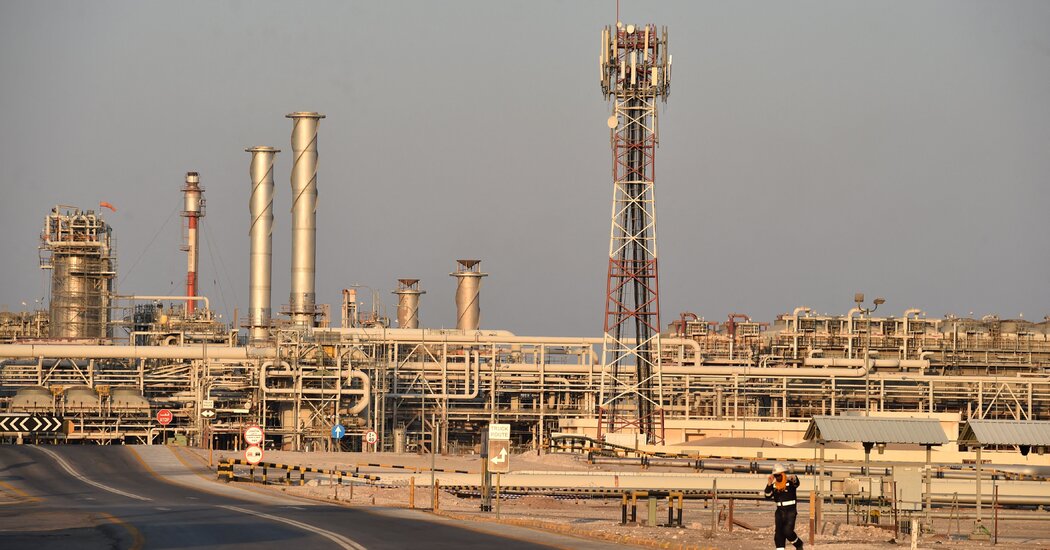Saudi Aramco on Tuesday reported $31.9 billion in net profit for the first quarter, down about 19 percent from the same period a year ago, mainly due to lower oil prices.
But with oil prices still relatively robust, Saudi Aramco remains wildly profitable — revenues were roughly comparable to the quarterly earnings reported by Exxon Mobil, Chevron, Shell and BP combined — especially as it produces massive amounts of petroleum from giant fields in Saudi Arabia. Arabia at relatively low cost.
Prices for Brent crude oil, the international benchmark, averaged about $81 a barrel in the first three months of 2023, compared to about $100 a barrel in the same period a year earlier.
Aramco’s main owner, the Saudi government, recently orchestrated a production cut by the group of countries known as OPEC Plus, apparently with the aim of halting falling prices. Prices rose on that announcement, but then started to fall again, falling to a low of around $72 a barrel earlier this month before recovering to around $77 on Tuesday.
Speaking to financial analysts, Aramco CEO Amin Nasser said oil demand looks likely to remain healthy this year as the economies of China and India, two major importers, are growing strongly. He attributed the recent fall in oil prices to concerns that economic growth would be undermined by central banks raising interest rates and the regional banking crisis in the United States. “In our view, the markets have overreacted,” he said.
Aramco is also investing in increasing production, apparently shaking off concerns that climate change risks could curtail the fossil fuel market for years to come.
The company now has to deal with large volumes of Russian oil flowing into key markets such as China and India due to Western sanctions that keep most Russian oil out of Europe. Mr Nasser said Russian oil diverted to India and China had “no impact” on Saudi sales to these countries, but said it had hurt other unnamed producers.
Aramco is taking steps to close these markets for the long term, through refining and chemical deals, primarily in Asia. Recently, Aramco reached agreements to participate in the development of a major petroleum complex in China and to acquire a 10 percent stake in Rongsheng Petrochemical, another Chinese company, for $3.6 billion. Aramco said the two agreements entitle the Saudi company to supply a total of 690,000 barrels of oil per day.
Like its Western rivals, Aramco is under pressure to return more money to shareholders – in this case, especially the Saudi government, which is hungry for money to fund development plans. Aramco said it would pay $19.5 billion in dividends for the quarter, up 4 percent from the prior period.
Aramco also said it would look into devising a mechanism for adding so-called “performance-related” dividends to the base payout. Biraj Borkhataria, an analyst at RBC Capital Markets, an investment bank, estimated that Aramco could pay out another $12 billion to $18 billion by 2023. In 2022, the company paid out $75 billion in dividends.
An increase in that order would raise the company’s payouts to about 4 percent of the value of the shares, from about 3.5 percent, Mr Borkhataria said, adding that such payments would still be lower in percentage terms than the western oil giants.

